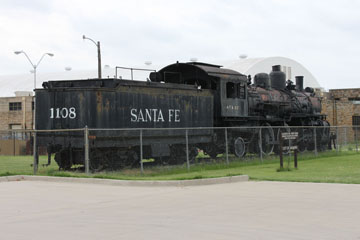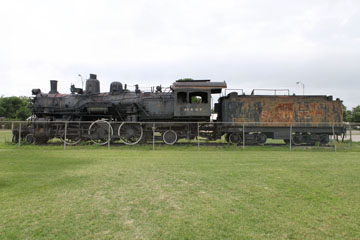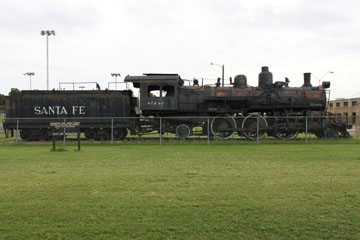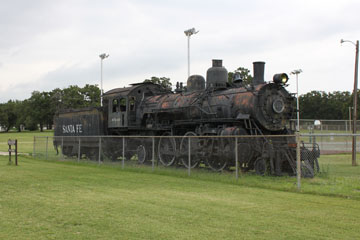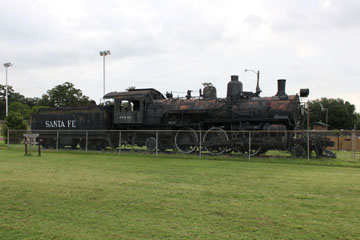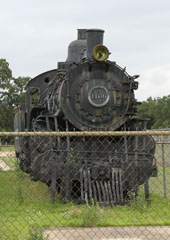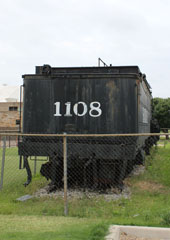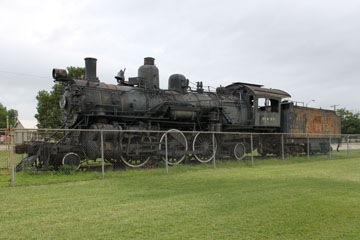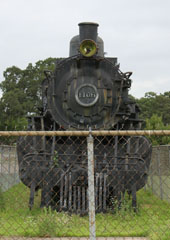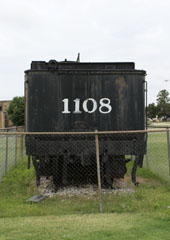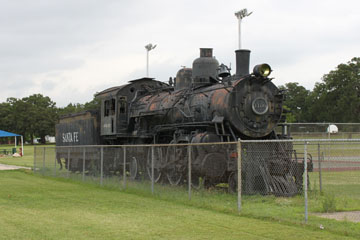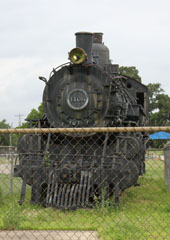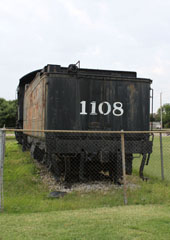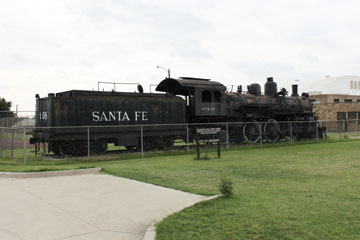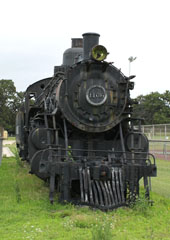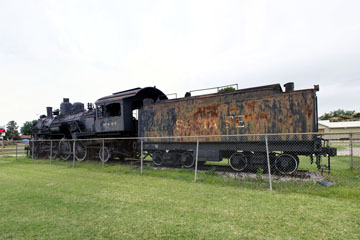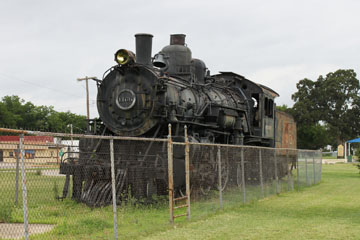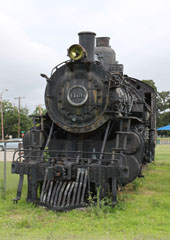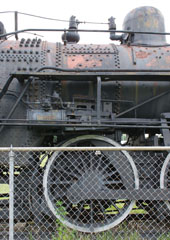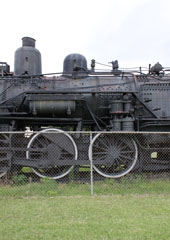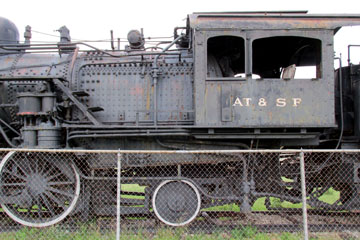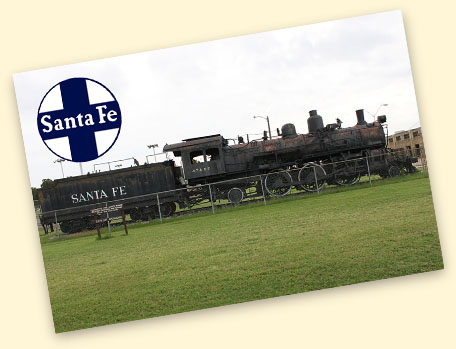

Outshopped in 1902, this is one of one hundred and three
1050 Class Prairie type (2-6-2) locomotives built for the
AT&SF by Baldwin between 1902 and 1903 (#1050-#1152). #1108 was built as a four cylinder Vauclain compound with
17" x 28" high pressure and 28" x 28" low pressure cylinders. The Vauclain configuration had two cylinders mounted in line one above the other with the pistons moving in parallel on a common crosshead. The Stephenson valve gear was on the inside.
The main advantage claimed for compounding was lower fuel and water consumption, but uneven forces and excess crosshead wear produced by Vauclains increased maintenance costs and largely offset any fuel economies. The complex valve assembly and the starter valve, which allowed admission of high pressure steam directly to the low pressure cylinder for starting with heavy loads, also increased maintenance costs. As a result, by the time #1108 was delivered, many US railroads were abandoning compounds and converting ones they owned to single-expansion locomotives. The AT&SF simpled all its 1050s between 1910 and 1922 with 23½" x 28" cylinders.
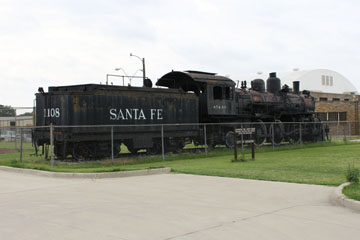
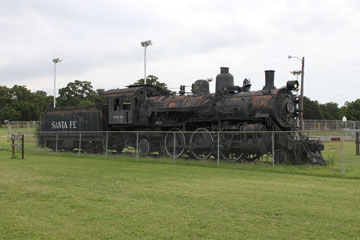
At 210,190 lbs, 141,690 lbs on its 69" drivers, simpled #1108 weighs 20,190 lbs more than as-built. Tractive effort also increased from 29,134 lbs to 38,097 lbs. It has an engine wheelbase of 32' 2" and driver wheelbase of 13' 8". The grate is 55.3 sq ft and the firebox 195 sq ft. An oil burner with a total heating surface of 3,738 sq ft, it operated at a boiler pressure of 200 psi.
When they were simpled, the 1050s were also mated to somewhat larger tenders, 112,610 lbs light with a capacity of 7,000 gallons of water and 2,350 gallons of oil.
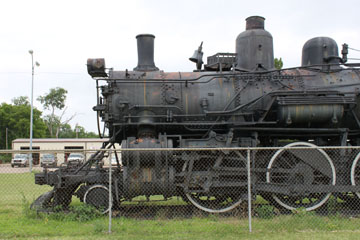

In 1915, a railroad worker repairing a 250 barrel gasoline tanker on the railroad tracks near East Main Street, set off an explosion. Much of downtown Ardmore was destroyed, over two dozen people were killed and many more injured. The call for help went out on the wire, and #1108 was put into service to speed doctors and nurses to the town from Oklahoma City.
#1108 was donated to the City of Ardmore, OK, in 1954. When I visited, it was in Whittington Park, but it has since been cosmetically restored and moved to the Ardmore railroad depot.
The first six 2-6-2 locomotives were built by Baldwin in 1885 for New Zealand Railways. A few more were built for US railroads around 1900 but, except for the AT&SF, they were not very popular with Class I roads.
The AT&SF was one of the main purchasers, buying two hundred and thirty-three between 1901 and 1907. A number have survived and several are dotted about the South-West. You can see others on the ATSF #1024, ATSF #1050, ATSF #1067, ATSF #1079, ATSF #1129, ATSF #1819 and ATSF #1880 pages of this website.


